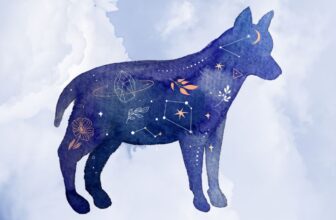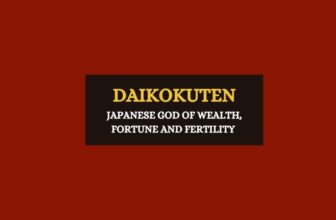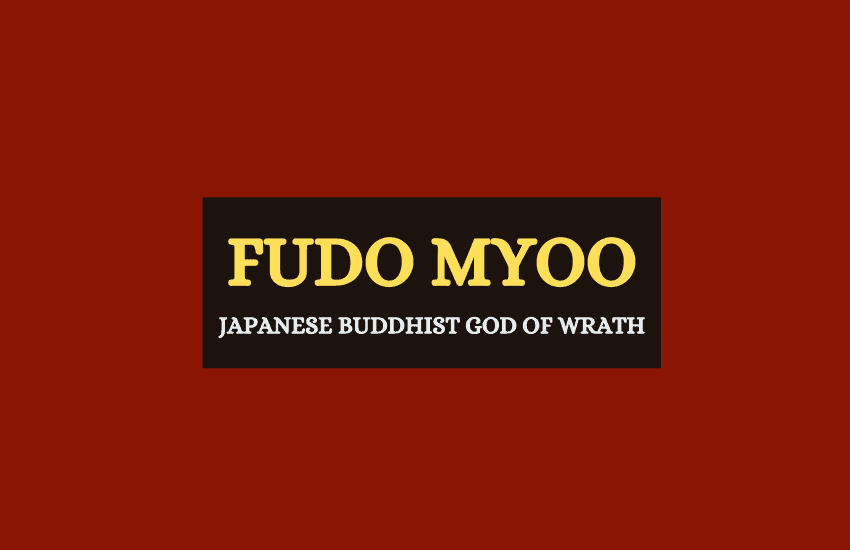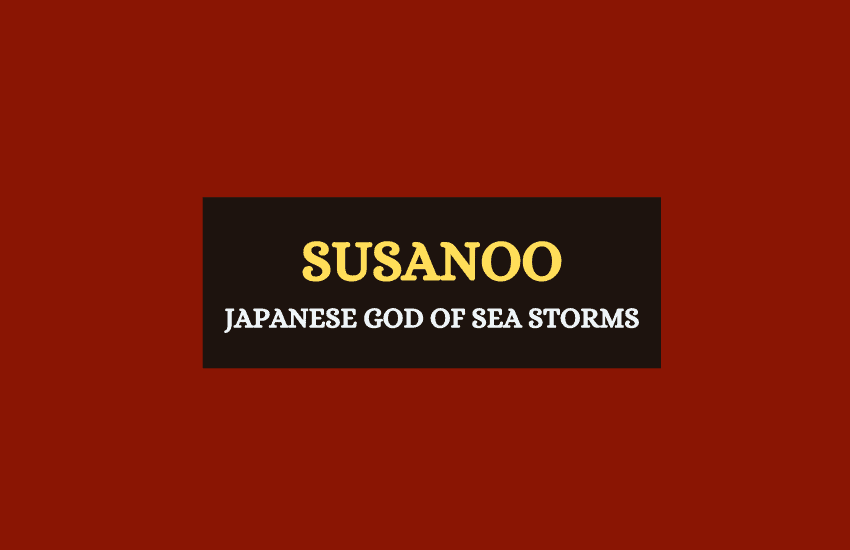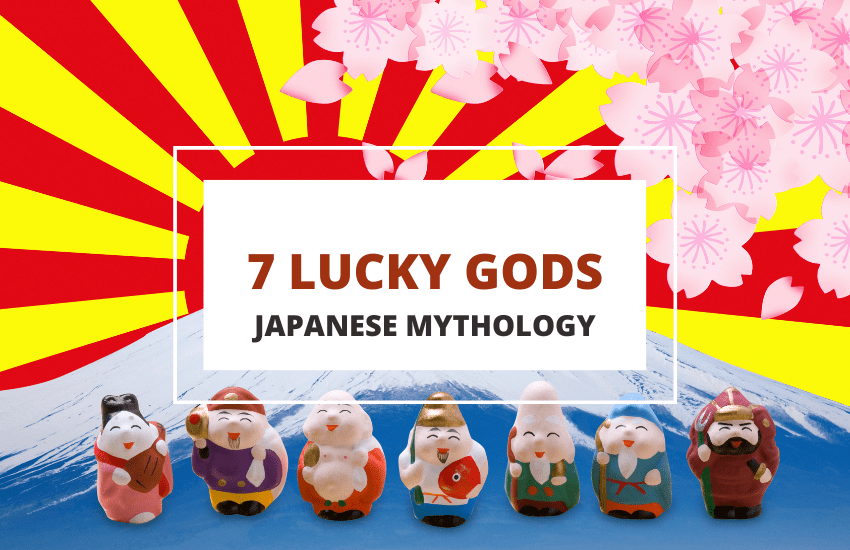
Table of Contents
The seven gods of luck are Jurojin, Ebisu, Hotei, Benzaiten, Bishamonten, Daikokuten, and Fukurokuju. They are collectively known as Shichifukujin in Japanese. They are revered as part of the Japanese religious system that evolved from the combination of indigenous and Buddhist ideas.
Based on the Japanese mythology posited by Humane King Sutra, the gods come from diverse traditions, including Hinduism, Buddhism, Taoism, and the Shinto faith.
Notably, the seven lucky gods have been a belief in Japan since the end of the Muromachi period in 1573, and it has persisted up to the current day. In this article, these seven lucky gods will be examined.
What Do the Seven Gods of Luck Stand For?
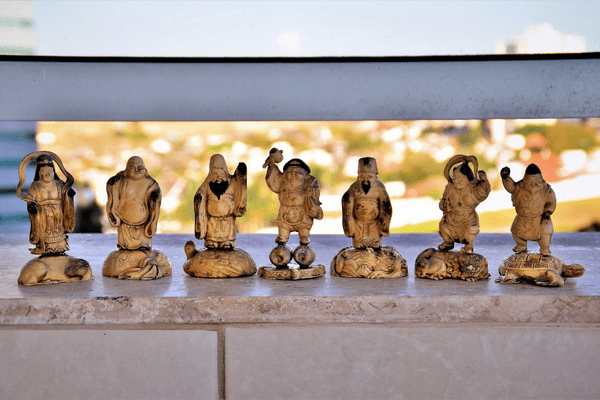
1. Jurojin
Jurojin stands for long life and good health. The god is believed to have come from China and is associated with Chinese Taoist-Buddhist traditions. He is regarded as Fukurokuju’s grandson, and they are believed to sometimes occupy the same body. He is believed to be the second coming of the notable pole star that blesses life with number and distances man from infirmities.
Jurojin is often represented as a short old man with a long head, an equally long white beard, and a peach that he holds in his hand. In addition, in one hand, he bears a staff while he holds a fan with the other. Tied to his staff is a scroll. The scroll is named Buddhist Sutra. He is believed to write the number of years living things will spend on earth. According to Japanese mythology, the Southern Polestar is regarded as Jurojin’s most significant symbol.
The god is often accompanied by a deer (believed to be his favorite), crane, or tortoise, which symbolizes the longevity of life. Jurojin resides in the Myoenji Temple, where devoted worshippers serve him. However, it is popularly believed that contrary to several of the other seven gods, Jurojin is never worshiped alone or independently but as part of the collective group of gods. As a result, he can be worshipped from any of the shrines of the other gods
3. Ebisu
Ebisu’s temple is the Ryusenji Temple, also known as Meguro Fudoson. Formerly known as Hiruko, this god controls prosperity, commerce, and fishing. Ebisu is part of the indigenous Shinto tradition. Significantly, he is the only deity that is originally from Japan.
Ebisu was given birth to by Izanagi and Izanami, jointly known to be deities of creation and death in Japanese mythology. However, he was said to be born without bones as a result of his mother’s sin during the sacred marriage rites. Consequently, he was deaf and could not walk appropriately or speak.
This disability made Ebisu’s survival very hard, but it also earned him some privileges over other gods. For instance, his inability to answer the annual ‘call to home’ in the tenth (10th) month of the Japanese Calendar enables people to worship him anywhere, including in restaurants. This is further enhanced by his ownership of three different shrines in Tokyo – Meguro, Mukojima, and Yamate.
Ebisu’s predominance as a god began with fishermen and merchants of aquatic products. This explains why he was famed as the ‘fishermen and tribesmen’s patron. Indeed, the symbolic representation of Ebisu is a man holding a red sea break in one hand and a fishing rod in the other.
According to one of the stories told, his affiliation with the sea is built upon the connection he had when he was cast into the sea by his parents, who disowned him due to his disability. There, he found a group of Ainu and was raised by Ebisu Sabiro. Ebisu is also known as Kotoshiro-nushi-no-kami (chief deity of business time).
3. Hotei
Hotei is a god of the Taoist-Buddhist traditions and notably identified with happiness and good fortune. Known as the most popular of the seven gods outside of Asia, he is portrayed as a fat, bald Chinese monk (Budai) wearing a simple robe. Besides the fact that his mouth is always in a rounded, smiling shape, Hotei is distinguished for his jolly and humorous nature to the extent that he got nicknamed ‘Laughing Buddha’.
The god is notable in Chinese culture as a representation of both contentment and abundance. Apart from this, he is popular with children (whom he protects), as he always entertained kids while he joyfully rubbed his big stomach.
To symbolize how much endurance and blessings he carries, depictions of Hotei show him carrying massive sack of magical treasures for his worshippers and others that come in contact with him. He is notoriously known to probably be the god with the most name. This is because his excessive character gives him a new name right from time. Hotei resides in the Zuishoji Temple.
4. Benzaiten
Benzaiten (dispenser of divine wealth and heavenly wisdom) is the only goddess among the seven gods of luck. She is the goddess of love, beauty, music, eloquence, and arts who is being served in the Banryuji Temple. Benzaiten originates from and is identified with the Hindu-Buddhist pantheon of India.
Benzaiten is famously associated with Kwannon (also known as Kwa Yin) and Sarasvati, the Hindu goddess. Her worshipper often places her near water for her place of worship. Worshipped on islands, particularly Enoshima, she is popularly believed to be capable of stopping earthquakes.
Its appearance is like that of a heavenly nymph having a traditional instrument known as biwa in one hand. The worship of Benzaiten grew with the rise of Buddhism in Japan’s imperial family. She always appears as a happy figure.
In addition, she is also an inspiration to artists of all varieties. The creativity she transfers boosts the creativity of artists. It is also believed that her blessings are sought by farmers aspiring for a bountiful harvest and women hoping for prosperous and productive love affairs with their spouses.
Similar to Sarasvati, she is connected to snakes and dragons and often associated with comets. She was said to be the third daughter of Munetsuchi’s dragon-king, who slayed Vritra, a popular serpent from ancient Indian Story.
Benzaiten has also been described as a by-product of the combination of different beliefs from Shintoism, Buddhism, and other Chinese and Indian spirituality. Hence, she’s worshiped in both Shinto and Buddhist temples.
5. Bishamonten
Bishamonten, or Bishamon, is the go-to god when it has to do with defending humans against evil spirits. Renowned as the only god associated with violence and wars, he removes evil spirits in unwanted places. His appearance is that of a warrior, making people ‘codename’ him the god of war and evil spirit punisher. He is worshiped in the Kakurinji Temple.
Bishamonten is a combatant and a fighting god who holds a stupa in one hand and a rod in the other. His continental origins can be said to be inferred from his armor, which appears strange for a Japanese fighter.
His facial expressions are diverse: ranging from joyful to serious and discerning demeanor. Bishamonten stands out among the seven lucky gods owing to the fact that he is the only one who is a fighter and uses force.
Also known as Tamoten, the god also has an affiliation with wealth and good fortune in addition to physical protection. He protects worshippers and their alms in the temple and gives away wealth through the Pagoda in one of his hands.
Due to the sanctuary position it takes, Bishamonten is most times identified as the gateway guardian to the temple of the other gods. With his military dress, he brings good fortune during wars and deadly personal encounters.
Bishamonten’s character can be likened to that of Vaisravana in Indian culture, and his role is similar to Hachiman’s (one Shinto god) in Japan. Many statues are made in his honor in different Buddhist temples and shrines of the seven gods of luck.
6. Daikokuten
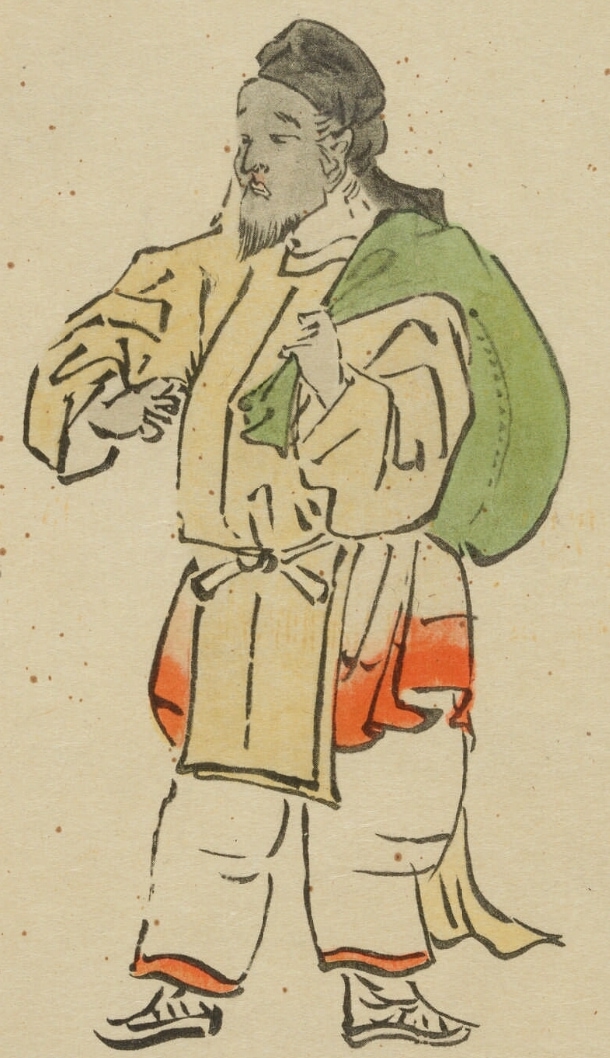
Farming is indispensable. This is because there is no life without the products of agriculture. Popularly known as the ‘god of the five cereal’, Daikokuten ensures profitable agriculture, prosperity, and commerce, particularly to the courageous.
In addition, he is also identified with fortune, fertility, and sexuality. Just like Benzaiten, the god is identified with the Hindu-Buddhist pantheon of India. Before his incarnation, he was known as Shiba, who lords over creation and destruction; hence his fame as the ‘god of great darkness’. However, he has been known to bring good tidings upon his introduction to Japan’s terrestrial world.
Capable of evolving in six different forms, Daikokuten is famously depicted as an ever-smiling being with a kind face who wears Japanese robes with a black hat. He holds a mallet in his hand to hunt demons and offer fortune, and a large sack said to be filled with happiness. Owing to his prowess in bringing profitable agriculture, he is often seated on a big bag of rice. Daienji is dedicated to the worship of Daikokuten.
7. Fukurokuju
Coined from the Japanese words, ‘Fuku‘, ‘roku‘, and ‘ju‘, Fukurokuju can be directly translated to possession of happiness, the abundance of wealth, and long life. In line with the meaning of his name, he is the god of wisdom, good fortune, and longevity. Prior to his emergence as a god, he was a Chinese hermit of the Song Dynasty and a resurrection of the Taoist Deity known as Xuantian Shangdi.
Based on Japanese mythology, Fukurokuju most likely originated from an old Chinese tale about a sage who was renowned for performing magic and making rare occurrences happen. He is identified as the only one of the seven gods who can raise the dead and bring to life dead cells.
Just like Jurojin, Fukurokuju is a pole star incarnate, and they are both worshipped in the Myoenji Temple. However, his primary origin and location is China. He is associated with Chinese Taoist-Buddhist traditions. In fact, he is believed in Chinese tradition to be the Japanese version of Fu Lu Shou – the ‘Three Star Gods.’ His appearance is depicted as a bald man with long whiskers and an elongated forehead which signifies his wisdom.
Fukurokuju’s countenance is similar to other gods of luck – happy and sometimes contemplative. He is associated with the Southern Cross and the Southern Pole Star because of his affiliation with the Chinese god – Shou. He is usually followed by a crane, tortoise, and seldomly, a black deer, all representing his offerings (prosperity and longevity).
Interestingly, he is not among the original seven gods of luck and took the place of Kichijoten between 1470 and 1630. He is the grandfather of the fellow god of luck, Jurojin. While some believe they belong to one body, others do not agree but believe they inhabit the same space.
Wrapping Up
Popular belief in Japanese mythology is that one who pays respect to the seven lucky gods will be protected from the seven misfortunes and be granted the seven blessings of happiness.
In essence, faith in the seven gods of luck is the assurance of protection from unusual events involving the stars and wind, theft, fire, droughts, water damage, storm damage, and unusual events involving the sun or moon.
This automatically translates to being rewarded with the seven blessings of happiness, which include long life, abundance, popularity, good fortune, authority, purity, and love.




